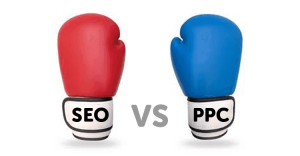Shopify has grown to become one of the most popular software as a service (SaaS) platforms for Ecommerce businesses. Statistics show usage of the platform has more than doubled since October 2017 meaning it’s now more important than ever that your Shopify site is up to speed from an SEO perspective. We recently covered more general SEO for Ecommerce websites but in this post, we will focus specifically on SEO for Shopify websites.
Shopify SEO issues
Some of the most frequent SEO issues we’ve come across with Shopify websites include the following:
- Duplicate page content – there is an issue with duplicate or similar content existing on two different URLs within Shopify sites. This could create confusion for the search engine crawlers as they might not be able to ascertain which of the two pages should be the canonical version.
- Internal linking structure – Shopify can sometimes use non-canonical versions of URLs within the internal linking architecture which can also confuse Google and mean it has to decide whether there is duplicate content or not. This issue can be fixed with the help of a Developer who will need to adjust the code contained within the product-grid-item.liquid file which should also fix the duplicate page content issue.
- Robots.txt – When you first set up your Shopify store it creates a robots.txt file for your store with prewritten “Disallow” commands such as
- Disallow/ :admin
- Disallow/ :cart
- Disallow/ :orders
These commands simply block Google from crawling these areas of your Shopify store as there is no need for these to be indexed in search results. This is usually sufficient for most store owners however as your store grows and gets more traffic you may need to adjust the Robots.txt file to allowing certain areas to be indexed, fortunately as of June 2021 you can now do this by creating a liquid file within Shopify to manage your Robots.txt information.
4. Sitemap.xml – Shopify will automatically generate a sitemap.xml index file when you first create your online store. It will automatically create links to child sitemaps that contain URLs of Product Pages, Collection Pages, Blog Posts and Marketing Pages. Shopify will include any published pages in the sitemap.xml file which can mean legacy pages that are published but no longer linked to on the site get included in the sitemap.xml file. It’s worth going through and checking through your sitemap file to find any instances of published pages that are not relevant for search engines to crawl.
5. Site speed – a common problem we hear about is Shopify sites suffering from site loading time issues. The Shopify infrastructure is actually set up well from a performance optimisation perspective compared to other Ecommerce platforms and makes use of Content Delivery Networks (CDNs) and browser caching. In addition, some other steps you could take to improve site speed includes:
- Lazy load product and other site images with the lazysizes library
- Remove Shopify apps that are not being used
- Resize and compress large images on high search traffic pages
6. Missing breadcrumbs – Breadcrumb internal links are an important addition to any Ecommerce website, often we have found these to be missing on Shopfiy websites but they can easily be added by a Developer through the product-template.liquid file and should also include BreadcrumbList structured data. Breadcrumb links can help Google understand a website’s structure and this will pay off in the search results pages.
Conclusion
We have just scratched the surface in this post with Shopify SEO optimisation techniques, for more information on other areas to consider or to speak to us about improving your Shopify site please get in touch with us and we will be happy to help and advise you on this.




